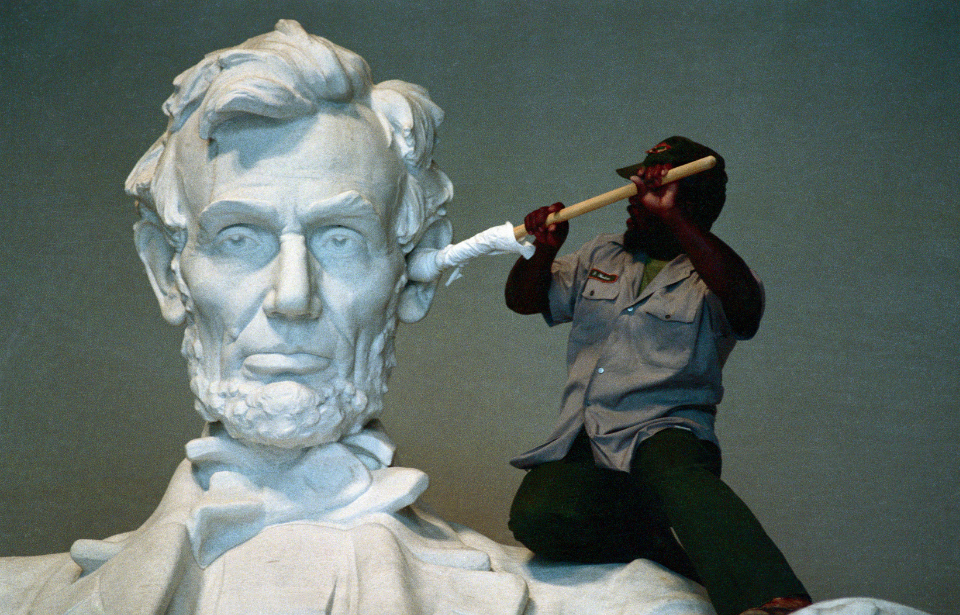With millions of visitors each year, the Lincoln Memorial is one of the most beloved monuments in the United States. Dedicated on May 30, 1922, the memorial celebrated its 100th birthday in 2022. Here are some memorable facts about the iconic Washington, D.C. landmark that’s a sacred place to so many.
Two million people tuned in to listen to the dedication ceremony

While 50,000 people attended the dedication in person, an astonishing two million more tuned in just to listen to the ceremony on the radio! Speeches were given by President Warren G. Harding, Chief Justice (and former president) William Howard Taft, and Dr. Robert Russa Moton, principal of the Tuskegee Institute and one of the most important African-American leaders of his time.
The dedication ceremony was segregated

Although the monument was in honor of Abraham Lincoln, nicknamed the “Great Emancipator” for his efforts to expand the rights of African-Americans, the dedication ceremony itself was a sign of how far the country still had to go. For starters, seating was segregated.
Additionally, Chief Justice Taft asked Dr. Moton to revise his keynote speech to exclude criticism of the federal government for its failure to protect the rights of African-Americans.
There’s a typo on the Lincoln Monument

The text of Lincoln’s second inaugural address, delivered on March 4, 1865, is carved into the north wall of the monument building. The speech was given less than two months after the Emancipation Proclamation was successfully passed. The first paragraph ends, “With high hope for the future, no prediction in regard to it is ventured.”
On the monument, however, “future” is spelled “euture.” Park officials believe sculptor Ernest C. Bairstow accidentally grabbed an “E” stencil instead of an “F.” While efforts have been made to fix the mistake, it’s still quite visible.
It could have looked like an Egyptian pyramid
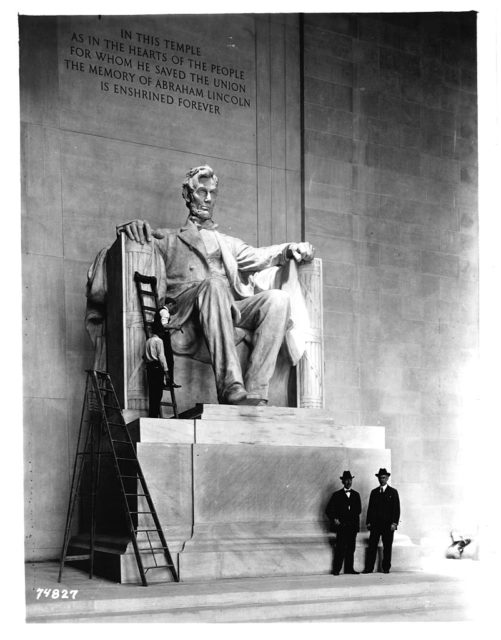
While the Lincoln Memorial Commission ultimately selected a Parthenon-inspired design by architect Henry Bacon, it considered several designs from another architect named John Russell Pope. Pope’s options for the Lincoln Memorial included an Egyptian pyramid flanked by classical porticoes, a Mayan temple with an eternal flame at the top and a ziggurat capped by a statue of Lincoln.
There’s no reason to feel bad for Pope, however – he later contributed the winning design for the Jefferson Memorial.
Lincoln’s son attended the dedication ceremony
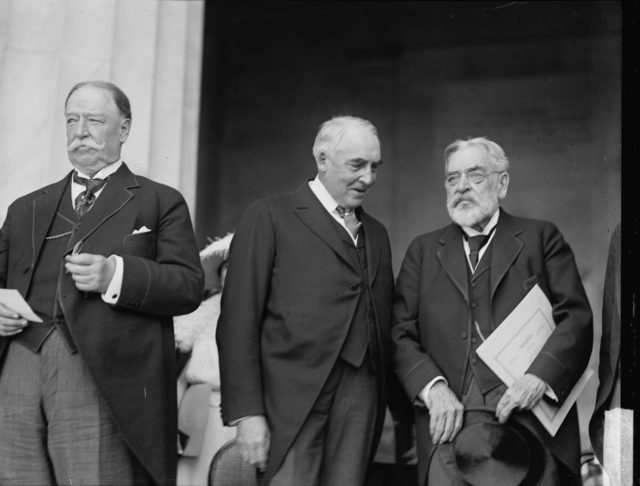
Robert Todd Lincoln, the president’s only surviving son, attended the monument’s unveiling in 1922. He was 78 years old at the time, and while he didn’t give a speech, he did receive an ovation when he reached his seat.
Lincoln took a keen interest during the memorial’s construction, frequently asking his driver to pass by the site to check on its progress and once making a special visit. He died in 1926 and was buried in Arlington National Cemetery, within sight of his father’s memorial.
The structure isn’t symmetrical

Despite its perfectly symmetrical appearance, the Lincoln Memorial has walls and columns that tilt inward. This is an optical illusion designed “to compensate for perspective distortions which would otherwise make the memorial appear asymmetrical.”
There’s a rumor about the Lincoln statue’s hair

There’s been a persistent rumor that Robert E. Lee‘s profile is carved into the back of Lincoln’s head, hidden in his hair, but this is not true. The US National Park Service even addresses the rumor on its official website, writing, “The only intentional shapes to be found are the waves and tufts of Lincoln’s hair. To see anything else requires some imagination.”
A significant part of the structure is underground

The visible portion of the Lincoln Memorial is just part of the monument. About 40 percent of the memorial is underground, owing to the fact that it’s so heavy. The foundation extends 66 feet at its deepest part, to support the immense weight of the structure.
Lincoln’s statue took four years to complete

The statue’s official title is “Abraham Lincoln” and it was carved by the Piccirilli brothers, an Italian family of renowned marble sculptors and carvers. Daniel Chester French designed the colossal sculpture, which was constructed from 1914–22. Chester paid special attention to Lincoln’s “expressive hands” when designing the tribute, and used his own as models.
French had already created a standing memorial statue of Lincoln, but he and Bacon thought a seated pose, in a classical chair, would be more appropriate for the national memorial. The seated figure of Lincoln stands 19 feet tall on an 11-foot pedestal. The entire 170-ton statue rises 30 feet from the floor.
250,000 saw Martin Luther King’s “I Have a Dream” speech there

Over the years, the Lincoln Memorial has become a symbolic location for the Civil Rights Movement. Martin Luther King Jr., delivered his historic “I Have a Dream” speech there in 1963, 100 years after Lincoln issued the Emancipation Proclamation. Approximately 250,000 were in attendance for the historic speech, which was given during the March on Washington for Jobs and Freedom.
Lincoln’s statue gets a deep cleaning twice a year
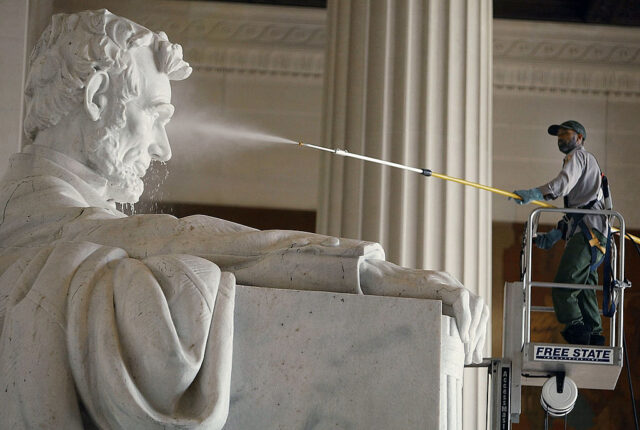
While it might seem a little undignified, the marble version of President Lincoln gets cleaned with a powerful pressure washer twice a year. Even his ears receive a good cleaning with specially made cotton swabs, to get out all the bird droppings and bugs that accumulate over the months.
The monument’s reflecting pool is also scrubbed out every year. Mike Litterst, the spokesman for the National Mall, said its drained first. “Normally, most of what’s found is an awful lot of goose poop, duck poop … for lack of a better term,” he shared. “A single goose can produce 1 to 2 pounds a day, and after a year, there are several inches built up that need to be dealt with.”
The Lincoln Memorial has been vandalized many times

As with many other prominent statues and monuments, the Lincoln Memorial has seen its fair share of vandalism over the years. This includes “permanent damage” caused by a vandal who carved letters into the marble in 2017, as well as other instances that were cleaned up.
One accidental instance of damage occurred during World War II, when a military anti-aircraft crew mistakenly fired a machine gun at the memorial. Three bullets damaged the marble cornice above the entrance.
It’s a popular site for movies and television shows
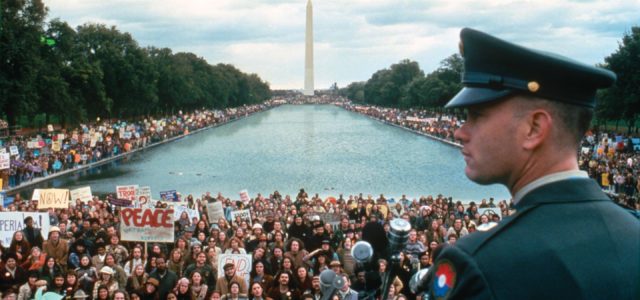
Due to the Lincoln Memorial’s significance, it’s commonly featured in film and television. From 1939’s Mr. Smith Goes to Washington to Forrest Gump (1994), Wedding Crashers (2005) and even Transformers: Dark of the Moon (2011), the monument has certainly received a lot of screen time over the years.
Richard Nixon once made a middle-of-the-night visit to protesters

Sites such as the Lincoln Memorial became common gathering spots for protests as opposition to the Vietnam War heated up. A few days after the May 1970 shootings at Kent State University, a protest and candlelight vigil were held at the monument. They lasted late into the night and attracted the notice of President Richard Nixon, who watched the event from the White House.
He decided to make an appearance at the vigil and “talk some sense” into the crowd, bringing along a small delegation of attendants. A few days later, Nixon said, “I have never seen the Secret Service quite so petrified with apprehension. I insisted however no press be informed and that nobody in our office be informed.”
More from us: Meet the Female Detective Who Foiled the First Assassination Plot Against Abraham Lincoln
It turns out there was no need for worry about the president’s safety at this particular gathering. “I walked over to a group of [protestors] and shook hands,” Nixon later recalled. “They were not unfriendly. As a matter of fact they seemed somewhat over-awed and of course quite surprised.”
